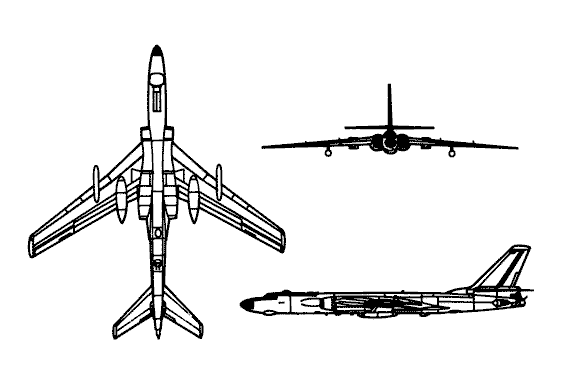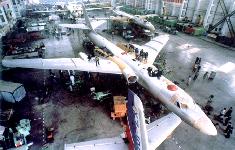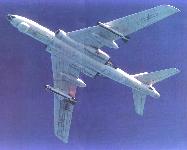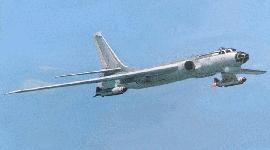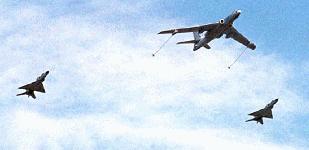





BADGER flight activity was first detected by US intelligence in July 1962. Since that time detected flight activity has been sporadic yet increasing. Night flight activity was not noted until 1970. The first confirmation of BADGER bombing training was provided by satellite photography on 13 August 1971 when a BADGER was photographed exiting the Hsingjenpao bomb range. Subsequent COMINT reporting identified BADGER activity that began in 1969 and has continued over this range as bombing training. In the early 1970s intensification of this training coupled with the highest noted altitudes for BADGER activity -- 41,000 feet -- confirmed China's serious intent to develop a strategic strike capability.
In addition to normal training missions, 4th IR aircraft have been used for a variety of secondary missions. BADGERs were used extensively in 1970 for air defense exercises in Northeast China. Both BULLs and BADGERs have been associated with special weapons programs. In addition to participating in nuclear tests both as drop aircraft and in air sampling roles, BULLs and BADGERs have been photographed in the air-to-surface missile area of the Shuangchengtzu test center.
Proficiency of the BADGER force as a whole was initially assessed by US intelligence as fair for medium to high-level daylight bombing and poor for night operations. The H-6 does not have a low-level capability. With continued training, the BADGER force reached a high degree of proficiency in high altitude bombing under instrument flight conditions. However, the BADGER is extremely vulnerable to modern air defense weapons systems and would have been hard-pressed to survive in the air defense environment over the Soviet Union.
China's medium bomber force did not initially have an air to-air refueling capability, though it was within the PRC's technical capability to develop one. By the mid-1990s five Chinese H-6D bombers had been converted into air-refueling tankers to allow China's warplanes to reach well into the South China Sea.
The H-6D maritime bomber which carries the YJ-6(c601) anti-ship missiles under its wings and is equiped with sea-searching radar under nose, began development in 1975 and made its first flight in 1981.
The wings of the Badger are mid-mounted, swept-back, and tapered with blunt tips. There are fences on top of the wings and its landing gear pods extend beyond the wings� trailing edges. The Badger's engine(s) are two turbojets mounted in wing roots which extend beyond the leading and trailing edges of the wing root. The engines also have round air intakes. Its fuselage is long, slender, and bulging where the engines are mounted and tapered to the tail. It has a round, glassed-in nose and a stepped cockpit. The tail is swept-back, tapered fin and flats with blunt tips. The Badger also has a tail gunner compartment. The Badger is used by the CIS, Egypt, Iraq, People�s Republic of China (H-6), Ukraine.
Specifications | |
| Designation | Hong-6 Badger |
| Type | bomber |
| Builder | |
| Wing Span | |
| Length | |
| Height | |
| Weight | |
| Engine | |
| Ceiling | 12300 meters |
| Cruise range | 3100nm |
| Internal Fuel | 36300 kg |
| In-Flight Refueling | No |
| Drop Tanks | none |
| Payload | 8000 kg |
| Crew | |
| Sensors | RWR |
| Armament | |
| Inventory | na |
| Basing | na |
